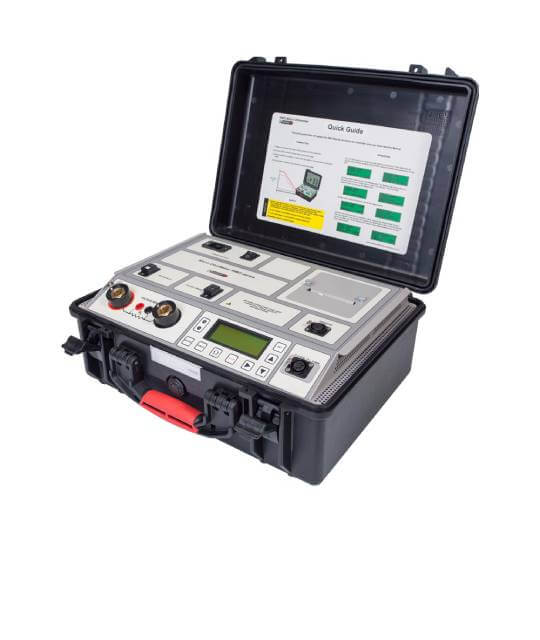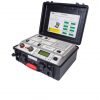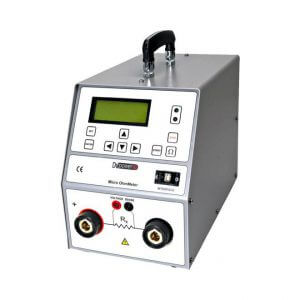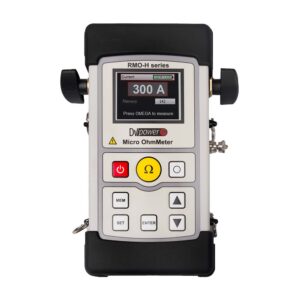Description
RMO_G Series is a micro ohmmeter that is used for contact resistance measurement in the following condition.
- disconnecting switches,
- high-current bus bar joints,
- cable splices,
- welding joints,
- and different high-current links in factory and high-induction field environments.
All DV Power RMO micro-ohmmeters use Kelvin’s 4-point measurement principle which is the most convenient for very small resistance measurements. The measurements are accurate and in accordance with international standards for AC high-voltage circuit breakers testing (IEEE C37.09 and IEC 62271-100).
Starting from 2003, DV Power has been a trend-setter on the market when our first 500 A micro-ohmmeter weighing only 8 kg (RMO500A / CPM500) was released.
Currently, DV Power products portfolio includes 16 models, divided into 3 series:
The instruments generate a user-selectable and ripple-free test current up to 800 A in an automatically regulated test ramp. Test current ramping significantly decreases the influence of the magnetic transients to measurement.
Brochure
Brochure
Brochure




